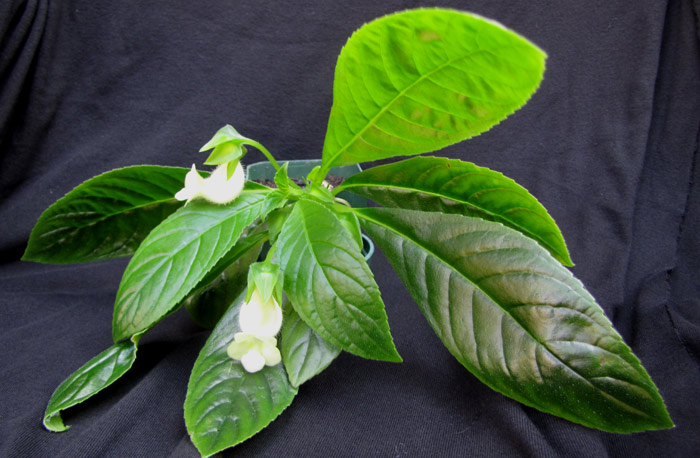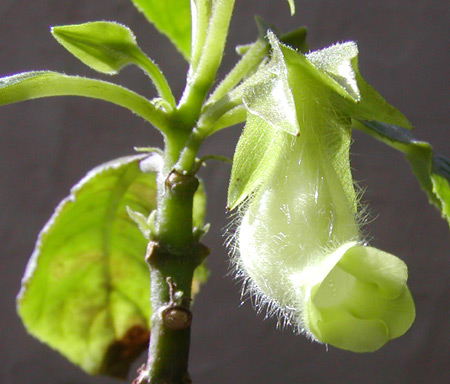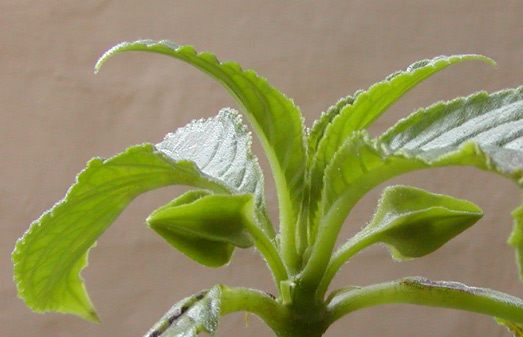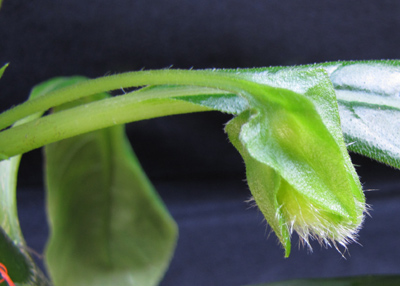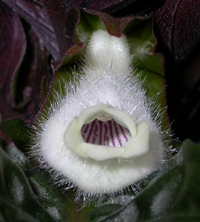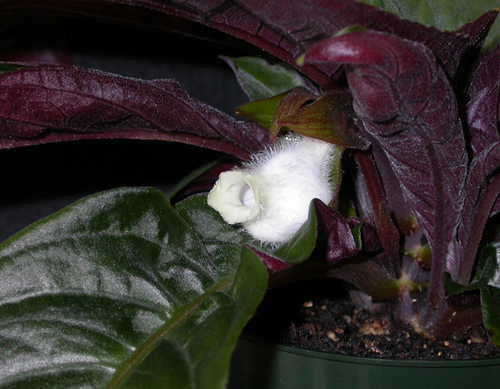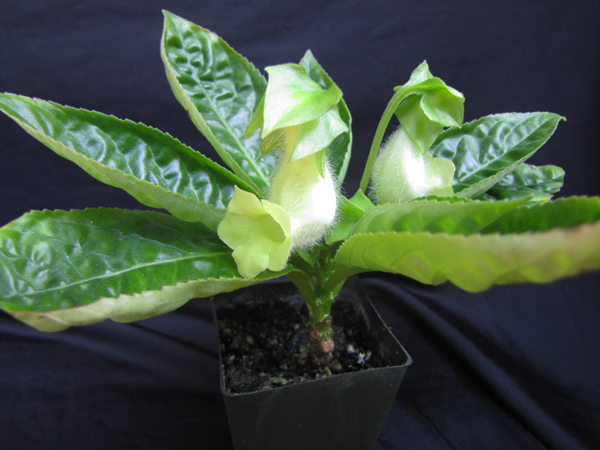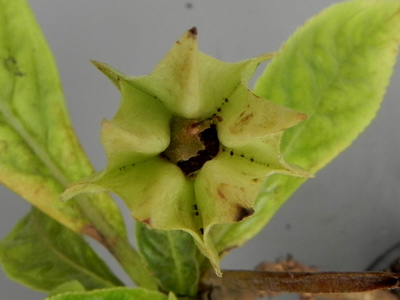Sinningia barbata
Sinningia barbata has flowers with a 90-degree bend in the middle. The corolla is white with a greenish tinge, or purple markings in some varieties.
- Flowers
- Flowerbuds
- Tuber?
- Pedicels
- Flowering season
- Varieties
- Fruit (splash cup)
- Feature table
- Nectaries
- External links
- Publication
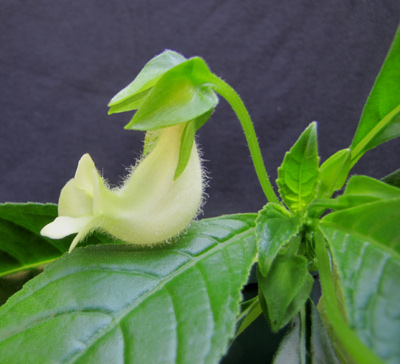
S. barbata is not particularly well known, but what renown it does possess rests on three unusual characteristics.
- Even though it is a genuine sinningia, and not (for instance) off in the paliavana suburbs, it does not have a genuine tuber, but rather a swelling at the underground base of the stem (but see evidence to the contrary).
- It has a square stem, just as if it were a member of the mint family.
- Its flowers are tinged with green.
